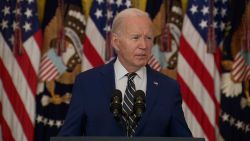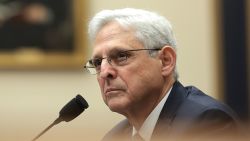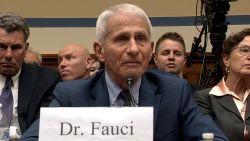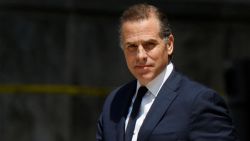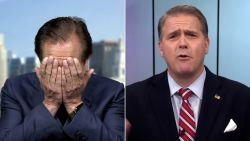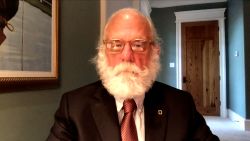Disregard presidential bluster, because decisions on re-starting America’s economy amid the ongoing coronavirus pandemic reverse the familiar Donald Trump-era power equation: for better or worse, Democrats hold the cards.
The Constitution obviates Trump’s empty boast last week of “total” power to end the coronavirus shutdowns. It’s the states and cities that issued shutdown orders that hold the power to undo them.
Republicans control 26 of 50 governorships, but the 24 states with Democratic chief executives account for 58% of America’s gross domestic product, according to calculations by the Metropolitan Policy Program at the Brookings Institution. And those states – led by behemoths California, the nation’s technology hub, and New York, its financial capital – have made clear they will maintain current restrictions beyond the May 1 target date Trump favors.
This week, New York Gov. Andrew Cuomo and California Gov. Gavin Newsom led the formation of regional planning coalitions with governors from surrounding states. A Midwestern bloc – led by Michigan Gov. Gretchen Whitmer, the newest Democratic darling, but also including Ohio’s Republican Gov. Mike DeWine – soon emerged, too.
Corporate America, courted by the administration to join in a task force, is following suit. The nation’s chief executives told Trump on a conference call this week they can’t bring their workers back until they have enough testing available to make sure everyone can stay safe. Jamie Dimon, chief executive of Wall Street titan JPMorgan Chase, vows not to send employees back to work until June at the earliest.
Coronavirus upended the nation’s power dynamic
Democrats have spent much of Trump’s presidency seething at their inability to stop him and his party. Though the GOP’s popular support has waned in recent decades, America’s constitutional design has extended its grip on power.
The Electoral College put Trump in the White House even though he lost the popular vote. The structure of the US Senate – magnifying the power of conservative states with tiny citizenries – has helped muscle through his agenda. Thirty-two of 53 seats in the GOP Senate majority come from 16 states with combined populations representing just 1 in 7 Americans.
Thus Trump’s party has pushed through a sweeping tax cut without broad public support, and blocked broadly popular gun control measures. Trump himself was able to do more from the White House, undoing regulations and making snap decisions like his decision to withdraw from the Paris climate agreement, over the opposition of a large majority of the public.
Most Americans have disapproved his performance throughout his presidency. But the five justices of the Supreme Court’s conservative majority stand behind him. Four of them were appointed by presidents (Trump and George W. Bush) first elected with fewer votes than their opponents.
Yet the coronavirus crisis has created an entirely different power alignment.
In the 21st century economy, large metropolitan areas with diverse, better-educated workforces and stronger ties to the global economy have become the engines of American growth. And in 21st century politics, diverse, better-educated workforces prefer Democratic leadership.
In 2016, Trump carried 2,584 of the nation’s 3,056 counties, which leads Trump periodically to brandish electoral maps bathed in red. But the 472 carried by Hillary Clinton accounted for nearly two-thirds of the nation’s economic output, Brookings has calculated. The 2018 House elections that returned the Speaker’s gavel to Nancy Pelosi replicated the pattern. Her Democratic caucus represents just 20% of the nation’s land area but 61% of its economic output.
Economic hubs are coronavirus hotspots
Now, that population density and those global connections have turned those large metropolitan areas into coronavirus pandemic hotspots – and left Democratic politicians mostly in charge of responding.
A majority of all confirmed US coronavirus cases and deaths come from the seven-state eastern cluster including New York, New Jersey, Connecticut, Massachusetts, Rhode Island, Pennsylvania and Delaware. All but Massachusetts have Democratic governors.
And after a brief boost for Trump in the first weeks of the crisis, it’s now governors of both parties shouldering responsibility for the crisis who have seen their ratings surge to levels the President has never approached. That includes Democratic governors in Wisconsin, Michigan, Pennsylvania and North Carolina – four of the six battlegrounds both parties expect to decide the 2020 election.
Trump oscillates from moment to moment with his political impulse and the demands of his psyche. Early last week, he chafed at the economic fallout and asserted his unilateral power to end it.
Later he bowed to public health experts with new data-driven guidelines affirming governors’ authority to “call the shots.” But he couldn’t resist grabbing a political wedge by urging restless supporters to “liberate” states with Democratic governors from the very guidelines he had offered.
Trump’s new political tack
That dizzying sequence defined the latest phase of the President’s response to a crisis that he first denied, then claimed to have solved, and now poses a grave threat re-election. On the toughest immediate challenge – the massive ramp-up in coronavirus testing necessary to control the pandemic and calm public fears – the President throws up his hands and declares it a state responsibility.
As an emerging strategy to blame governors for the nation’s agony, it lacks promise at the outset. The governors have more credibility than the President.
Trump gave a hint on Friday of plans to respond – by whipping up the same anti-Establishment fervor that worked for him in 2016, with his series of tweets calling on governors to “liberate” their states.
Yet, however searing the economic pain for so many, recent polls by CNN and Pew Research Center show most Americans wary of moving back toward normalcy before the government convinces them it’s safe. That burden hangs heaviest on Democratic governors, not the Republican President.



